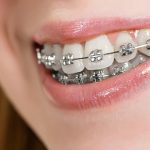Everything you need to know about Temporary Anchorage Devices
TADs, or Temporary Anchorage Devices are clever orthodontic tools that work alongside braces to help speed up tooth alignment.
Much like a dental implant, TADs are small titanium screws that are inserted into the jaw to help keep everything in place while teeth are being realigned. It is a very effective treatment that is working very well in patients who have received it so far.
What are TADs?
As we mentioned, Temporary Anchorage Devices are small titanium screws much like a dental implant. The screw is inserted into the jaw and acts as an anchor for braces, hence the name. It acts as an immovable center around which the teeth can be moved to achieve the look we are going for.
How are TADs inserted?
The procedure is very simple and involves very little discomfort. The TAD is done with local anesthesia and is screwed directly into the soft tissue and bone. Usually, the procedure takes only a few minutes from beginning to end. Removal is fast too.
How do Temporary Anchorage Devices work?
Once the Temporary Anchorage Device is in the jaw, it acts as a fixed anchor to secure wire braces. They give the braces a fixed point from which to encourage teeth to move into alignment. Much like moving a heavy object, you need something to push against to provide the resistance necessary to move that object. The TAD provides that something.
TADs provide the resistance necessary to allow the brace to pressure the teeth into moving into alignment. Often, orthodontists use the back teeth to secure braces in place but TADs offer a more secure alternative.
What are the benefits of TADs?
There are many benefits to using TADs in orthodontics. They are safe, temporary, simple to install and remove and easy to look after. Most importantly, they offer a fast and flexible way to realign teeth and accompolish difficult orthodontic movements. A fixed anchor allows the brace to work faster, potentially shortening the time you need to wear it, which is great news.
Secondly, it allows orthodontists to move teeth in more ways and in more directions than was previously possible. This enables us to quickly and effectively design a solution that will realign teeth in the fastest, most effective way possible. We can also use them with expanders when the maxillary suture appears to be closed.
TADs also allows us to conventional orthodontics in situations where a surgical procedure might previously have been the only solution.





